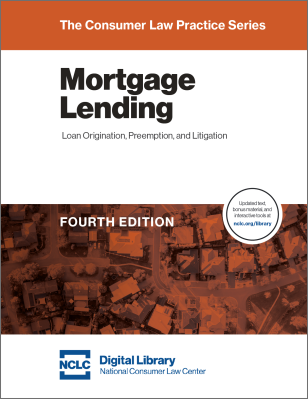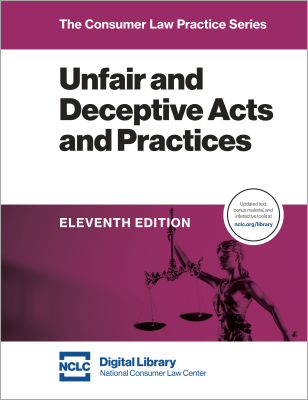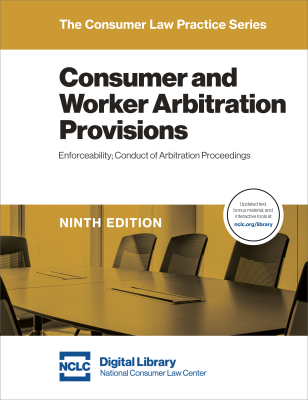(Article Updated Sept. 29, 2025; Oct. 21, 2025)
Home equity “investment” (HEI) loans, often marketed as a quick way for homeowners to get cash without the burden of monthly payments, are facing a new wave of legal challenges. Recent court decisions, including a significant ruling from the Ninth Circuit Court of Appeals, are upholding claims against HEI loans. Courts are increasingly recognizing that what these companies call “investments” are, in fact, predatory mortgage loans subject to state consumer protection laws.
This article explores these pivotal cases and offers key takeaways for litigators representing homeowners. By understanding how courts are interpreting these complex agreements, attorneys can build stronger cases against HEI lenders and protect consumers from deceptive practices.
What Is a HEI Loan?
Aggressively marketed since around 2017, HEI loans are complex, predatory mortgage loans, often backed by private equity firms. These companies now are significantly ramping up their marketing and reach. HEI lenders misleadingly label their products as “option agreements,” “home equity investments,” or “home equity sharing agreements,” when in fact they are predatory mortgages. HEI lenders often target older homeowners who own homes that are likely to significantly appreciate, and who need cash but might not have access to a traditional second mortgage.
Lenders lure homeowners with promises of fast cash and “no monthly payments.” In exchange for a relatively small amount of upfront funds, the homeowner signs a series of documents—often over 100 pages—that place a lien on their home. The lender then becomes entitled to a percentage of the home’s future total value or its increase in value—often as high as 70%. This future payment is triggered by events such as the sale of the home, the homeowner’s death, or the end of the contract’s term—which can be as short as 10 years. The lender does not analyze the homeowner’s ability to repay the obligation and retains the right to sell the home when the loan comes due, putting homes at risk.
While the lender touts no monthly payments, the homeowner is responsible for all property taxes, insurance, fees, and maintenance of the home, as well as all costs associated with any future sale of the property. Homeowners also remain responsible for paying off their first mortgage and any other liens with the funds that they retain from the eventual sale.
Many homeowners discover the true impact of the agreement only when they try to sell their homes, move and rent them out, obtain additional financing or refinance existing loans, or declare bankruptcy. The recorded liens do not explain the terms of the transaction and even seasoned professionals find the underlying contracts difficult to understand.
Homeowners have begun to challenge these exploitative contracts in court. In the past few weeks, several important court decisions have come down that provide helpful insight into how to litigate claims against HEI loans.
Ninth Circuit Holds HEI Products Are Loans Covered by Consumer Protection Laws
In a significant victory for consumers, the Ninth Circuit resolved an appeal in Olson v. Unison Agreement Corp., 2025 WL 2254522 (9th Cir. Aug. 7, 2025), a case raising class claims under Washington’s reverse mortgage, mortgage lending, and unfair and deceptive acts and practices (UDAP) statutes. The district court granted a motion to dismiss the claims, and the Ninth Circuit reversed.
The Ninth Circuit rejected the lender’s arguments that the contract was an “option agreement” exempt from lending laws, rather than a loan. The Ninth Circuit focused on substance over form and held that Unison’s product was “credit” under the term’s “plain and ordinary meaning” because it was an “initial advance of funds or goods coupled with an obligation to make future payment to the person providing that advance.” Olson, 2025 WL 2254522, at *3. The court found further support from the language of Washington’s reverse mortgage statute, which expressly covered future payments in the form of “shared appreciation or equity” as a “credit obligation.” Id. at *3–4.
The court then examined the actual terms of the agreement, including the conditions that if the borrowers wished to get out of the loan without selling their home, they would have to repay the loan, and that borrowers would have a future obligation to the company unless the home dramatically decreased in value. Id. As a result, the product was structured such that the borrowers “have a very real set of contingent obligations to make future payments to [the lender].” Id. at *4.
Unison also argued that there was no “obligation to make future payments back to Unison,” as the value of its future payment could rise and fall with the value of the home. Id. at *3. But the Ninth Circuit explained that this was no different from other “nonrecourse” obligations, where the value the lender receives is limited by the home’s value. Id. And the Washington reverse mortgage statute expressly includes “nonrecourse” obligations as a form of credit. Id.
The court held that even though typical option contracts are not credit obligations, “the details of the particular structure of this overall arrangement . . . includes a formal option as one component but effectively creates the substance of a shared-appreciation reverse mortgage.” Id. (emphasis in original).
The Ninth Circuit also looked past Unison’s deceptive labels to determine the true nature of these financial products and found that the borrowers adequately alleged that the product was deceptively marketed in violation of the UDAP statute. The court found that the lender’s materials claiming “that the transaction did not involve a ‘loan’ or ‘debt’ have the capacity to deceive” and that “the statement that ‘no interest’ was involved is deceptive.” Id. at *5.
Massachusetts Trial Court Holds HEI Loans Subject to State Consumer Protection Claims
In Commonwealth v. Hometap Equity Partners, L.L.C., 2025 WL 2468564 (Mass. Super. Ct. Aug. 21, 2025), the Commonwealth of Massachusetts asserted consumer protection claims against HEI lender Hometap for violations of Massachusetts mortgage lending laws, the criminal usury statute, and UDAP protections.
The court denied the lender’s motion to dismiss. First, the court rejected the argument that the product was not a loan, but instead an “option agreement.” The court explained that, because there was “no substantial risk that Hometap will lose its principal” and that it never intended to actually own the house—just recoup funds through its sale or other forms of repayment—the product was a loan. Id. at *6. The court found it irrelevant that the loans were non-recourse (that the borrower is not liable for payment other than through a lien on property). Id. In short, “the substance of the transaction . . . governs not the labels.” Id. Notably, the court explained that comments to the federal Truth in Lending Act creating an exception for option and investment contracts were unpersuasive, because in reality the lender “risks no such loss” as required by these exceptions to TILA. Id. at *7.
The court further upheld the Commonwealth’s claim that the lender engaged in deceptive marketing and sales practices, despite the lender’s arguments that its disclosures undermined the claim, in light of its half-truths, omissions, and misleading statements. Id. at *8–9. Finally, the court upheld the claim that the product was unfair or unconscionable, based on allegations that the product is unconscionably expensive, fails to consider borrowers’ ability to repay without losing their homes, requires balloon payments after ten years, and markets to people with a high likelihood of “default” without losing their homes. Id. at *9–10.
Bankruptcy Court Holds HEI Loans Subject to State Consumer Protection and Bankruptcy Claims
Stone v. Real Estate Equity Exchange, 2025 WL 2222829 (Bankr. D. Colo. July 30, 2025), was brought as an adversary proceeding in a chapter 13 bankruptcy. The debtor asserted Colorado state law claims for unconscionability, UDAP violations, violations of mortgage lending laws, and violations of the Colorado Consumer Credit Code. The debtor also asserted two bankruptcy claims: a claim for rejection of an executory contract and an objection to the lender’s proof of claim.
The lender moved to dismiss, arguing that the contract was an “option agreement” and therefore not subject to lending laws, and that it was not unfair, deceptive, or unconscionable considering its purported disclosures and the borrower’s signature on the documents. The lender also argued that the contract was not executory.
The court rejected the lender’s arguments. The court explained that the borrower’s complaint met the requirements of Rules 12 and 9 by setting forth both “detailed allegations surrounding the Agreement and its impact on the Debtor” as well as “allegations regarding [the lender’s] business model, which were supported by citations to [the lender’s] website, news articles, and podcasts involving [the lender’s] CEO.” Stone, 2025 WL 2222829, at *2.
The court found that the borrower plausibly alleged that the product was a loan, rather than a true option contract, including by setting forth that “[t]he documents [the lender] sent to the Debtor . . . include statements making it clear that the Debtor would be required to pay [the lender] back.” Id. at *3. The court further found that the contract could be considered an executory contract in bankruptcy, because the borrower sufficiently alleged that the lender had future obligations under the contract, including the obligation to pay the borrower the remaining purchase price for the so-called option. Id. at *4. As a result, the borrower has the possibility of rejecting the contract, relieving her of her future obligations under the contract and forcing the lender to pursue damages for breach, instead of its other contractual remedies (foreclosure or forced sale).
U.S. District Court Allows State Law Claims Against HEI Loan to Proceed to Trial
In Weingot v. Unison Agreement Corp., 2:21-cv-0452 (E.D.N.Y. Sept. 30, 2025), the United States District Court for the Southern District of New York denied the lenders’ motion for summary judgment in significant part, largely adopting the magistrate court’s recommendation. The plaintiffs asserted claims for fraud, rescission, and quiet title.
In regard to the fraud claim, the court found that there was “a clear dispute of fact as to whether statements made by Unison, such as the website statement that Unison "'share[s] in the appreciation' of one's home when sold . . . is fraudulent or misleading.” Weingot, 2025 WL 2778400, at *4. The court likewise found evidence of fraudulent intent through the plaintiff’s testimony that the lender failed to answer his questions about the product. Id. Finally, the court found evidence of reasonable reliance where the contracts were “at least minimally complicated” and the borrower testified that “he did not understand the Agreements he signed” or their impact. Id. at *5.
The court further held that the borrower could maintain his claim for recission without demonstrating pecuniary loss, in light of his testimony creating triable issues about whether he “‘received something different’ than what he believed he ‘contracted for,’” id. at *5, and rejected the lender’s other arguments, id. at *6. The court also upheld the claim for quiet title.
While the court adopted, without reasoning, the magistrate judge’s recommendation to grant judgment to the lender on the borrower’s claim of a fraudulent appraisal, other cases in New York and elsewhere have found that similar claims related to appraisal fraud are actionable. See, e.g., Homeward Residential, Inc. v. Sand Canyon Corp., 298 F.R.D. 116, 130 (S.D.N.Y. 2014); Gaudie v. Potestivo Appraisal Servs., Inc., 837 F. Supp. 2d 799, 803–804 (N.D. Ill. 2011); Superior Bank, F.S.B. v. Tandem Nat’l Mortg., Inc., 197 F. Supp. 2d 298, 311–312 (D. Md. 2000), adhered to on denial of reconsideration (June 27, 2000).
Litigation Takeaways
—Multiple Claims Exist to Challenge HEI Loans
With careful pleading, multiple claims can be successful, depending on the case, state law, and individual circumstances. Courts have now upheld the following types of claims and defenses to HEI loans. Litigants should consider each in light of the facts of their cases:
- State usury & consumer credit laws (Stone; Hometap; Singhal v. Unison Agreement Corp., 2023 WL 2734230 (S.D. Fla. Mar. 31, 2023)).
- State mortgage lending laws (Olson; Stone; Hometap).
- State reverse mortgage laws (Olson; Stone; Hometap).
- State unfair and deceptive acts practices (UDAP) claims (both unfairness and deception/omission) (Olson; Stone; Hometap).
- Unconscionability (statutory and/or common law contract defense) (Stone).
- Fraud (Weingot).
- Rescission (Weingot).
- Quiet title (Weingot).
- Declaratory judgment action (Singhal).
- Rejection of executory contract (bankruptcy) (Stone).
In addition, other state laws might apply, such as elder abuse protections or false advertising prohibitions. After collection efforts begin, a state’s debt collection laws might also apply if they cover collection of non-delinquent debts.
As the recent cases make clear, it is vital to plead challenges to HEI loans using specific facts about the contract terms as well as the broader context, including the lender’s business model. Courts are not yet familiar with this product, the case law is mixed, and HEI lenders have taken pains to draft documents that obscure the true nature of the transaction and provide purported “disclosures” that lenders can point to in litigation. When choosing and setting forth claims, be sure to set forth the elements of each claim and factual support for each. Consider whether statutes provide examples of specific prohibited conduct and identify applicable examples and statutory subdivisions with direct citations, as well as clearly set forth any allegations of a general statutory violation.
—Focus on the Contract’s Specifics
Be sure to include specific allegations about the product’s terms in the complaint. HEI lenders rely on their assertions, often embedded in the documents, that these products are not loans as an attempt to avoid application of mortgage lending laws. But these laws were established precisely to protect homeowners from this type of equity theft and abuse. State and federal laws require consistent and clear disclosures and may include interest rate caps that HEI loans usually exceed.
HEI lenders have further drafted their documents to advise homeowners to consult with lawyers and professionals, and to provide other purported disclaimers and disclosures, that are not consistent with legal requirements for mortgage lending. Citing to these disclaimers and disclosures, the lenders claim that the loans are not deceptive, unfair, or unconscionable. A homeowner must carefully plead specific facts to counter these arguments. Pleading specifics of the offer, contract, and other closing documents can establish unfairness, deception, and that the products are in fact loans.
To demonstrate that the product is a loan, credit obligation, and/or debt, and that the lender’s representations to the contrary are deceptive, highlight terms and facts that demonstrate that the borrower must repay the lender even if the contract says otherwise. Such lender terms include requirements to repay if the home is not sold. If possible, demonstrate how much the housing market would have to decline for the lender to actually take a loss, and how unlikely that would be in light of recent trends. If the lender will always exercise its “option” to seek repayment, the “option” is illusory and the product is, in fact, a loan. Statements included throughout the marketing or other documents that explain that a borrower “must” or “will have to” repay the loan provide additional support. Contract terms that show that the lender never intends to own the property, just to liquidate it to obtain repayment, are also persuasive. It is also helpful to refer to any documents that the company requires the homeowner to sign that describe the product as a loan, the company as a lender, and the homeowner as a borrower.
“Disclosures” that underestimate the true cost, such as by failing to include fees in interest rate calculations, providing projections that do not reflect the reality of housing market appreciation, or that use numbers that do not actually reflect the transaction at issue will also support claims of unfairness and deception. Highlighting marketing statements that the product is not a loan, does not involve a debt, and contains no interest will also provide support. Other supportive facts might include the length and confusing nature of the contract, the fact that documents incorporate one another by reference but are not provided at the time of signing, hidden information on a website indicating additional terms (such as alteration of appraised values), restraints on sale or refinancing, requirements that the homeowner bear all costs prior to and at the time of sale, and prepayment penalties.
—Look Beyond the Contract
Practitioners are also well served to focus the court on the lender’s business model, by including allegations about the lender’s business practices in the complaint. In addition to the specifics of the contract and documents, a focus on the lender’s business model can demonstrate that a borrower is a victim of a larger scheme and can establish both the unequal relative bargaining positions of the parties and the lender’s deceptive practices. This can also help establish that the lender intends to be repaid, and that the product is thus a loan.
Review of the lender’s consumer-facing website and its investor-facing materials found online can reveal inconsistencies between its representations to consumers about shared risk and the goals of the product (to “help”) and its representations to investors that the product will maximize return for investors, produce stable returns, and transfer large amounts of home equity to them. Review of Wikipedia pages, news articles, blogs, podcasts, and other easily accessible online materials can provide additional valuable insight.
—Carefully Prepare Challenges to Arbitration Clauses
The contracts at issue in the recent decisions do not involve broad pre-dispute binding arbitration clauses, but many HEI loan contracts do. HEI lenders claim that the Truth in Lending Act (TILA) prohibition on arbitration in mortgage loans (15 U.S.C. § 1639c(e)) does not apply to them, because (they say) HEI loans are “option contracts” and “investment plans” that are excluded from the definition of “credit” by TILA Regulation Z’s Official Interpretations 12 C.F.R. pt. 1026, supp. I, cmt. 2(a)(14)(1)(vii), (viii). See NCLC’s Consumer and Worker Arbitration Provisions § 7.2 for a discussion of the TILA prohibition on arbitration provisions in mortgage loans.
While not addressing arbitration directly, the decisions in Olson, Hometap, and Stone that HEI loans are “credit” and “debt” rather than options or investments support the argument for the application of the TILA provision prohibiting arbitration in mortgage transactions. See 15 U.S.C. § 1602(f) for TILA’s definition of credit. In addition, Olson’s reliance on context in the Washington reverse mortgage statute is helpful, since TILA includes similar language in its reverse mortgage provisions about “nonrecourse” credit and payments made in the form of “shared appreciation or equity” in the home. See 15 U.S.C. § 1602(cc). Hometap’s explanation that the product is not covered by the TILA exemptions because it, in reality, is not an option or investment is also helpful. 2025 WL 2468564, at *7.
In arguing the TILA ban on arbitration applies to HEI loans, practitioners can also apply the reasoning that the CFPB set forth in an amicus brief submitted in Roberts v. Unlock, as well as the borrower’s response in opposition to the motion to compel arbitration in that case. Note that the CFPB brief should not be cited directly because the CFPB has now changed its position.
Critical in any challenge to an arbitration requirement is to first determine if the arbitration provision contains a clear and unmistakable clause delegating to the arbitrator questions as to the enforceability of the arbitration provision—it usually does. But if there is no such clear and unmistakable delegation clause, then the court determines whether the TILA ban applies to the HEI loan.
If there is a delegation clause, then the litigant must first attack the delegation clause. Failure to do so might result in the court referring the whole matter to arbitration despite the TILA prohibition. Instead, indicate that the delegation clause itself is prohibited by the TILA provision and that the court decides the enforceability of the delegation clause. See NCLC’s Consumer and Worker Arbitration Provisions § 7.2.3. Well supported claims alleging that the entire contract is void or voidable (i.e., for unconscionability) might also be lodged specifically against an arbitration clause or delegation clause.
Conclusion
With recent court decisions upholding claims that home equity “investments” can be predatory loans, the legal landscape is shifting in favor of consumers. The rulings in Olson, Stone, Hometap, and Weingot provide a blueprint for litigators, demonstrating that courts are willing to look past deceptive labels and allow homeowners to hold lenders accountable. By pleading both the specifics of the contract and the broader predatory business model, litigators can successfully challenge these agreements and protect vulnerable homeowners.
Additional Resources
Olson Case Documents
- Olson v. Unison Agreement Corp., 2025 WL 2254522 (9th Cir. Aug. 7, 2024)
- Plaintiff's Opening Brief, Olson v. Unison Agreement Corp. (9th Cir. Feb. 27, 2024)
- Wash. Dep’t Fin. Inst. Amicus Brief, Olson v. Unison Agreement Corp. (9th Cir. Mar. 5, 2024)
- Plaintiff's Reply Brief, Olson v. Unison Agreement Corp. (9th Cir. July 1, 2024)
Stone Case Documents
- Stone v. Real Estate Equity Exchange, 2025 WL 2222829 (Bankr. D. Colo. July 30, 2025)
- Complaint, Stone v. Real Estate Equity Exchange (Bankr. D. Colo. Aug. 9, 2024)
- Opposition to Motion to Dismiss, Stone v. Real Estate Equity Exchange (Bankr. D. Colo. Dec. 9, 2024)
Roberts Case Documents
- CFPB Amicus Brief, Roberts v. Unlock Partnership Solutions AOI, Inc. (D.N.J. Jan. 15, 2025)
- Memo Opposing Motion to Compel Arbitration, Roberts v. Unlock Partnership Solutions AOI, Inc. (D.N.J. June 16, 2025)
- Amended Complaint, Roberts v. Unlock Partnership Solutions AOI, Inc. (D.N.J. Mar. 20, 2025)
Hometap Case Documents
- Com. v. Hometap Equity Partners, L.L.C., 2025 WL 2468564 (Mass. Super. Aug. 21, 2025)
- Complaint, Com. v. Hometap Equity Partners, LLC (Mass. Sup. Feb. 19, 2025)
NCLC Issue Brief: Home Equity Investment Loans Are Subprime Mortgages: Federal and State Policymakers Should Update Rules to Protect Consumers (May 27, 2025)
CFPB Materials (Jan. 15, 2025) (use for information & reasoning; might not be CFPB current position):
- CFPB Amicus Brief, Roberts v. Unlock Partnership Solutions AOI, Inc. (D.N.J. Jan. 15, 2025)
- CFPB, Consumer Advisory: Beware of Costly, Risky, and Complex Home Equity “Investment” Contracts (Jan. 15, 2025)
- CFPB, Mortgage Lenders Must Comply with the Law, Not Invent Loopholes (Jan. 15, 2025)
- CFPB, Issue Spotlight: Home Equity Contracts: Market Overview (Jan. 15, 2025)
Home Equity Sharing Agreements in Washington State, U. Wash. (July 2025) (research based report on HEI products)
Acknowledgments
Thanks to the following for important contributions to this article: counsel on the Olson and Roberts cases, Thomas Scott-Railton and Jennifer Bennett from the firm of Gupta Wessler; Elizabeth Adams from the firm of Terrell Marshall; co-counsel with NCLC on the Stone case, Alex Witteveld from Colorado Legal Services; and NCLC attorneys Diane Thompson, Andrew Pizor, and Andrea Bopp Stark.




